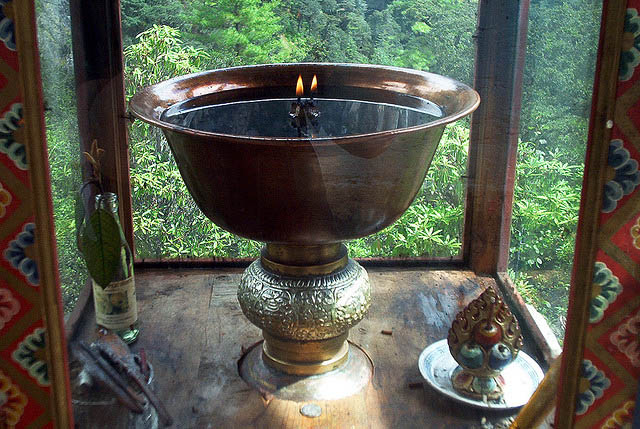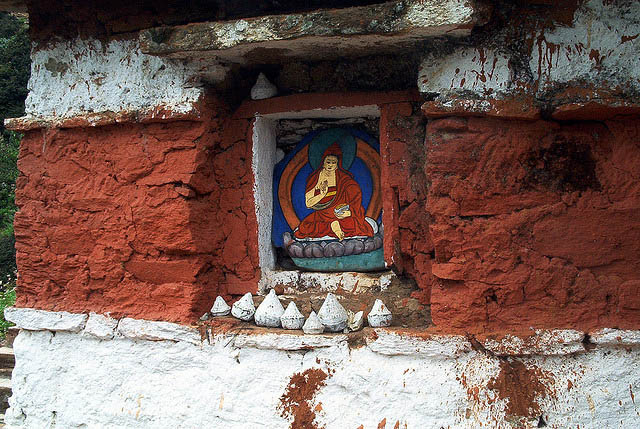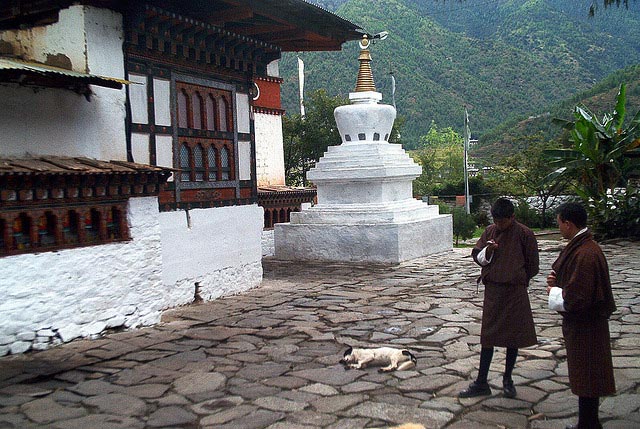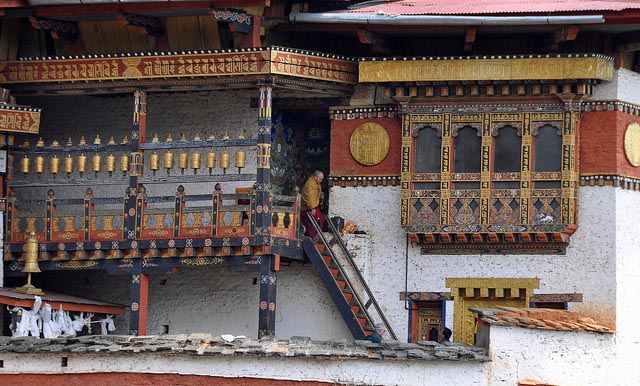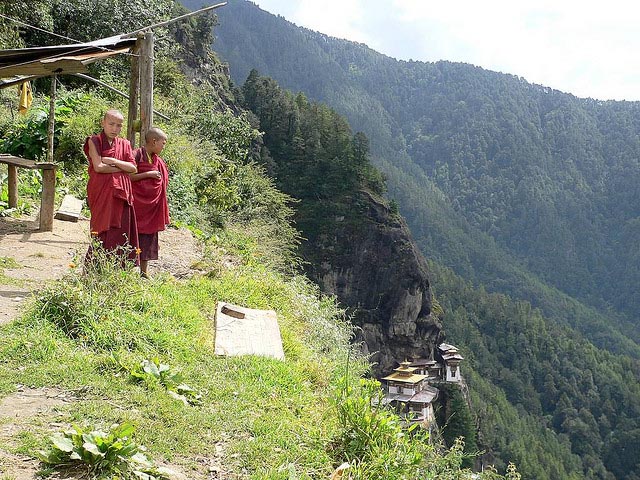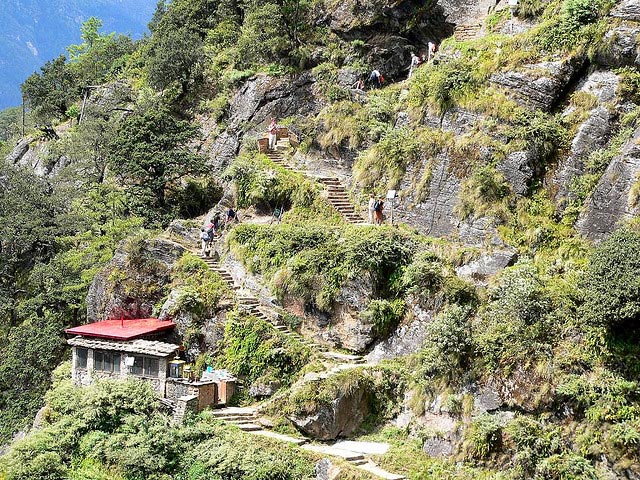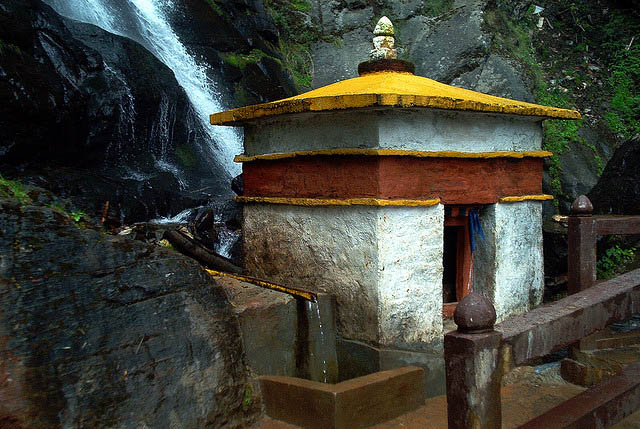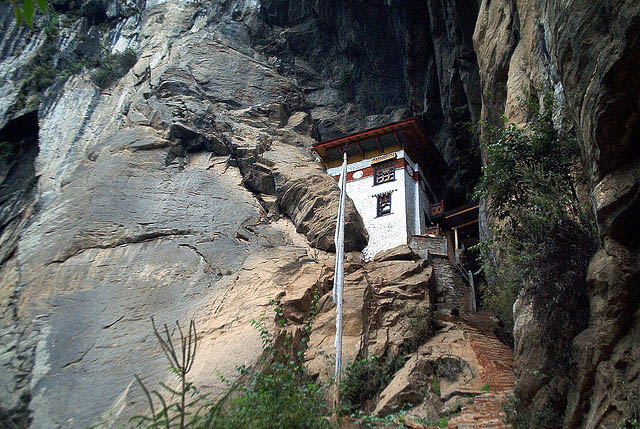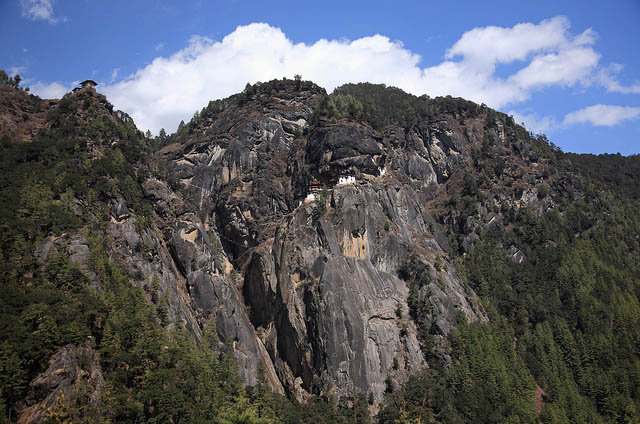In the 17th century the well-known Terton Pema Lingpa of Bumthang, who founded many monasteries in various parts of Bhutan, was also instrumental in creating religious and secular dance forms from his conception of the 'Zandog Pelri' (the Copper Coloured mountain), which was the abode of the Guru Padmasambahva . This dance is performed in Paro as the Tsche festival. But it was during the time of Ngawang Namgyal of the Drukpa sub sect, who fled Tibet to escape persecution by the opposing sect of the Gelugpa, that an administrative mechanism was established in Bhutan.
 |
| Taktsang Monastery |
In due time, he established himself in Bhutan as a 'model of rulership' and was known as the "Shabdrung" with full authority. He wanted to establish an edifice at the Taktsang Pel Phuk site. It was during a Tibetan invasion of Bhutan in 1644-46 that Shabdrung and his Tibetan Nyingmapa teacher gTer-ston Rig-'dzin sNying-po had invoked Padmasambhava and the protective deities at Taktsang to give them success over the invaders. He performed the bka' brgyad dgongs 'dus rituals associated with the celebrations of Tshechu. Bhutan won the war against Tibet. However, Shabdrung was not able to build a temple at Takstsang to celebrate the event, even though he very much wanted to do so.
The wish of Shabdrung to build a temple here, however, was fulfilled during the 4th Druk Desi Tenzin Rabgye , the first, and only successor of Shabdrung Ngawang Namgyel , "a distant cousin from a collateral line descending from the 15th century 'crazy saint' Drukpa Kunley". During his visit to the sacred cave of Taktsang Pel Phuk during the Tshechu season of 1692 he laid the foundation for building the temple dedicated to Guru Rinpoche called the 'Temple of the Guru with Eight Names'. It was a decision taken by Tenzin Rabgye while standing at the cave overlooking the Paro valley. At this time, he was leading the Tshechu festival of religious dances. At that time the only temples reported to be in existence, at higher elevations, were the Zangdo Pelri and Oxygen Tsemo.
The monastery is located 10 kilometers to the north of Paro and hangs on a precipitous cliff at 10,240 feet, about 3,000 feet above the Paro valley, on the right side of the Paro Chu.
The rock slopes are very steep and the monastery buildings are built into the rock face. Though it looks formidable, the monastery complex has access from several directions, such as the northwest path through the forest, from the south along the path used by devotees. A mule track leading to it passes through pine forest that is colourfully festooned with moss and prayer flags. On many days, clouds shroud the monastery and give an eerie feeling of remoteness.
On the approach path to the monastery, there is a Lakhang and a temple of Urgyan Tsemo which, like the main monastery, is located on a rocky plateau with a precipitous projection of several hundred feet over the valley. From this location, the monastery's buildings are on the opposite ravine, which is known by the name "Copper-Coloured Mountain Paradise of Padmasambhava". This is the view point for visitors and there is a cafeteria to provide refreshments. The trek beyond this point is very scenic with the sound of the water fall breaking the silence. Along the trek route blue pine trees, prayer flags and kiosks selling paraphernalia for worships are seen. The route is scattered with number of temples. On this path, a large water fall, which drops by 200 feet into a sacred pool, is forded over by a bridge. The track terminates at the main monastery where colourful paintings are displayed. Guru Rimpcohe's cave where he meditated is also seen. This cave is opened for public viewing only once a year.
Text source:- Wikipedia. Images are copyrighted by their owners. Found any copyright issue, contact the administrator immediately. Report it now!
You have read this article Asia /
Bhutan /
Mountains /
Temples
with the title Paro Taktsang Monastery. You can bookmark this page URL https://tiffanyeatworld.blogspot.com/2011/12/paro-taktsang-monastery.html. Thanks!









